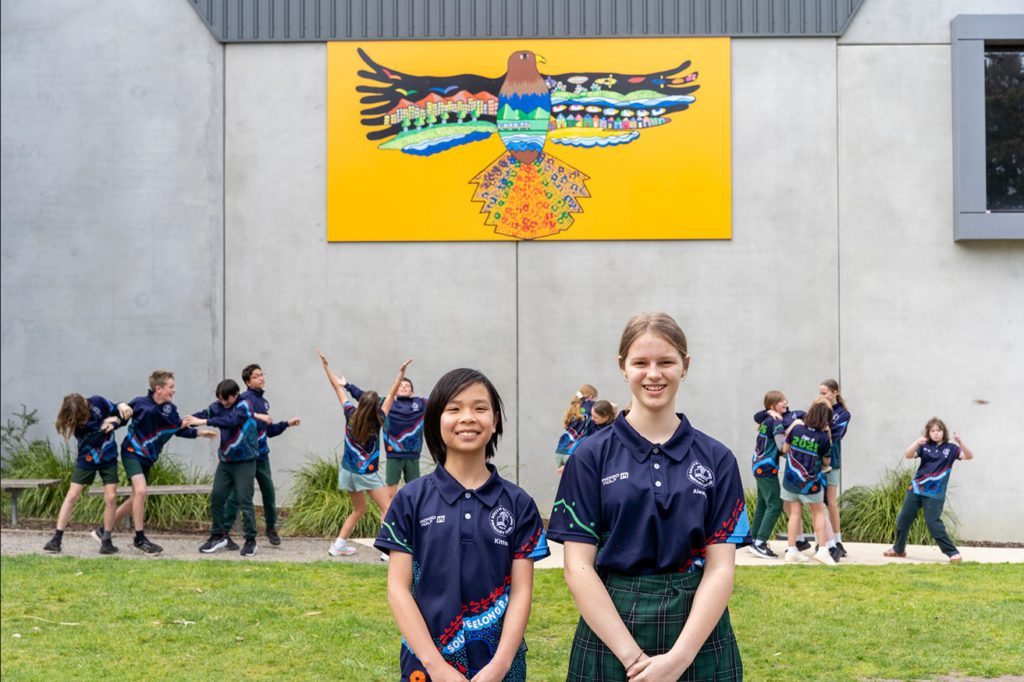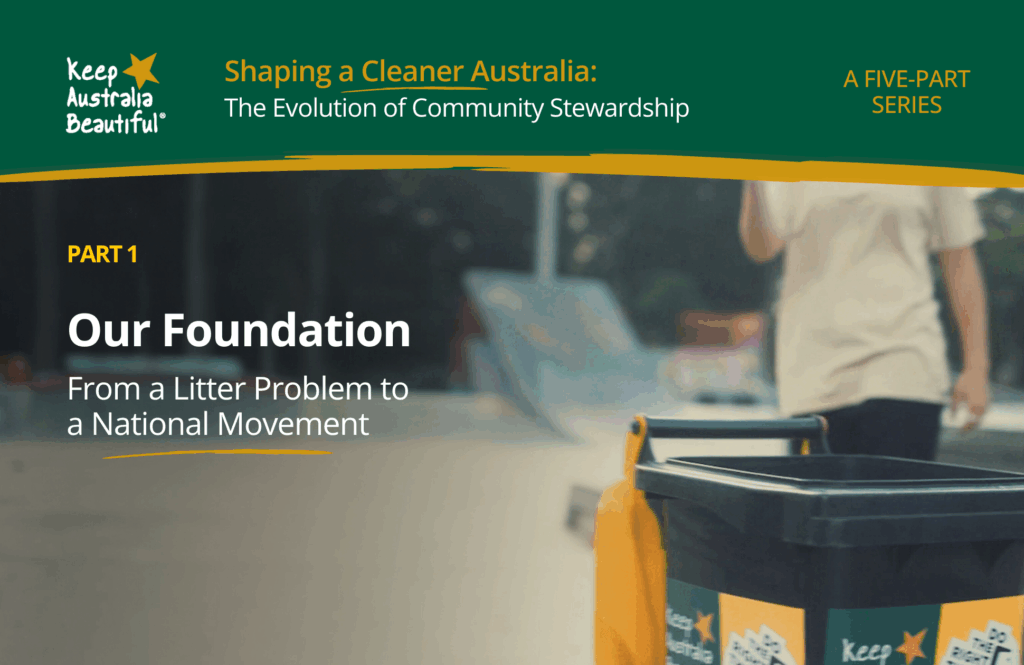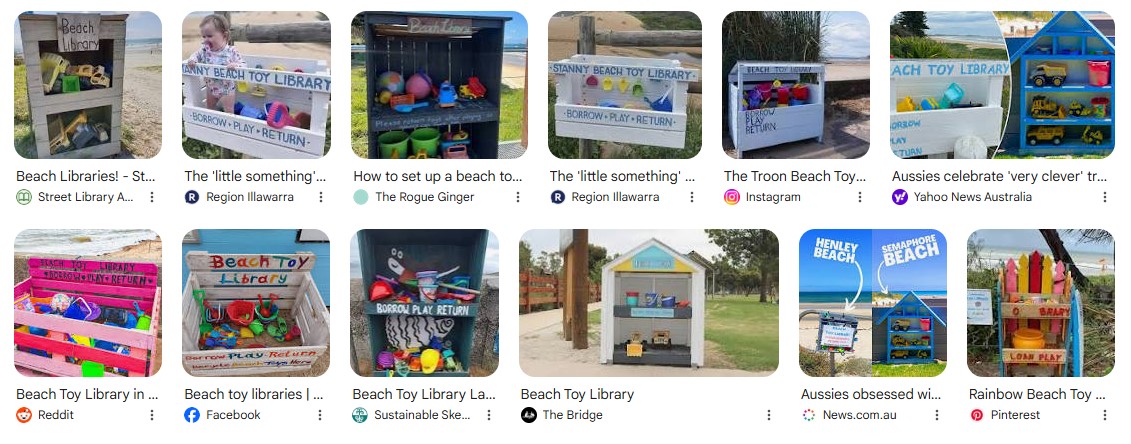
In The Beginning – Shaping a Cleaner Australia: A Five Part Series
Why community action still matters
For nearly 60 years, Keep Australia Beautiful (KAB) has been part of Australia’s environmental DNA, helping shape how Australians think, talk and act when it comes to waste, litter and caring for our country. Recent debates about who should carry the responsibility for waste and recycling in Australia highlight a vital question: how do organisations like KAB contribute to real change, and how have they evolved over time?
An important point to remember, is that while industry action and strong policy are essential, individual and community action have long played a key role in shifting culture for environmental change – complementing industry and government by contributing to solutions that go further than top-down regulation alone.
By reflecting on KAB’s history, we can take a closer look at how grassroots efforts contribute to meaningful change and lay the foundation for environmental values that ultimately influence systemic change.
How community action shapes national change
We all know small actions can add up to big results, but how does this happen in practice? Take a local community group that spends weekends weeding and planting native vegetation as an example. Their work builds ownership and pride, inspiring neighbours to join. As the project grows, schools adopt similar programs, councils fund and expand initiatives, and local media coverage spreads the story.
Soon these behaviours become normal, a cultural shift takes hold. People start valuing sustainability, expecting environmentally responsible practices from businesses, and supporting stronger policies from local governments. What began as a Saturday morning activity became part of a national conversation about sustainability.
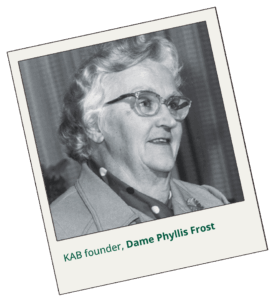
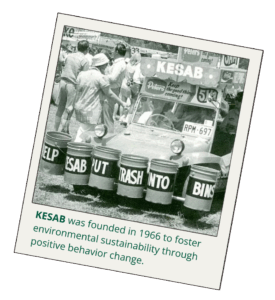
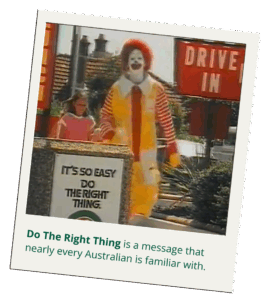
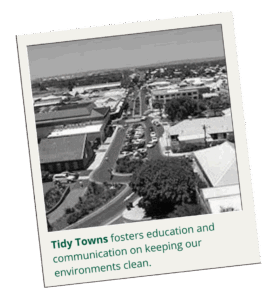
KAB’s legacy of cultural change
This ripple effect is the very principle that underpins organisations like Keep Australia Beautiful. From its early days to its modern programs, KAB has scaled local action into national impact.
KAB emerged in the 1960s as a community-driven response to a growing litter problem, supported by government, industry, and civic partners who saw the need for both infrastructure and cultural change. Early campaigns redefined litter as a matter of civic pride and planted the seeds of environmental social marketing in Australia.
This spark grew into movements like Tidy Towns, transforming a simple beautification challenge into engines of local leadership and community-driven sustainability. The iconic Do the Right Thing campaign carried these ideas into national consciousness, becoming one of Australia’s first mass behaviour-change programs and embedding collective care into everyday life.
Today, KAB’s work extends far beyond litter, tackling upstream waste, single-use plastics, biodiversity, and the environmental impact of daily choices, while working with councils, communities and companies to shift whole systems, not just individual behaviour. Each of KAB’s chapters represents a different kind of cultural change — a foundation for the next era of environmental action.
Looking Ahead: A Closer Look at KAB’s Impact
From humble beginnings to national leadership in sustainability education and behaviour change, KAB bridges the gap between policy, industry, and everyday Australians taking action. Our work is still rooted in local pride and care, while recognising everyone has a role to play in caring for our environment, not out of blame, but because real change happens when every layer of society moves together.
This FIVE PART SERIES will unpack the history and evolution of KAB’s programs, shining a light on the impact they, and similar grassroots initiatives, have helped create. Because understanding where we’ve come from helps us understand the kind of change we can create next. Read PART 1.
WRITTEN BY: Rosie Starr (KAB Content Creator – Volunteer)

